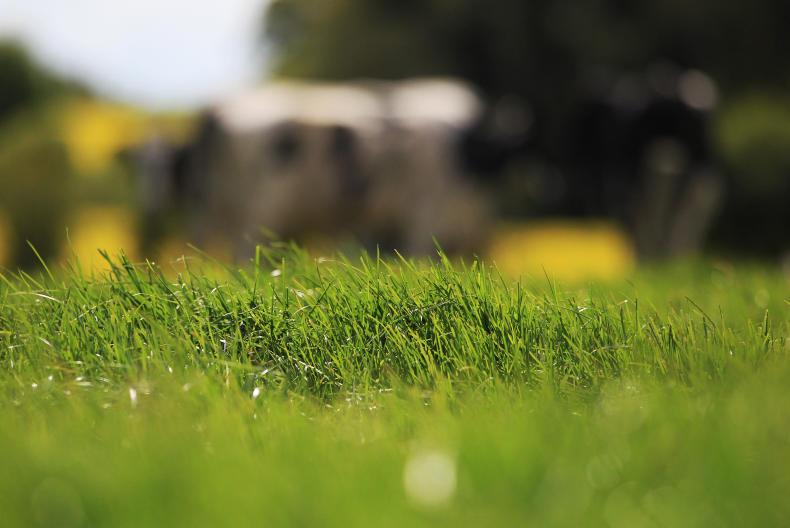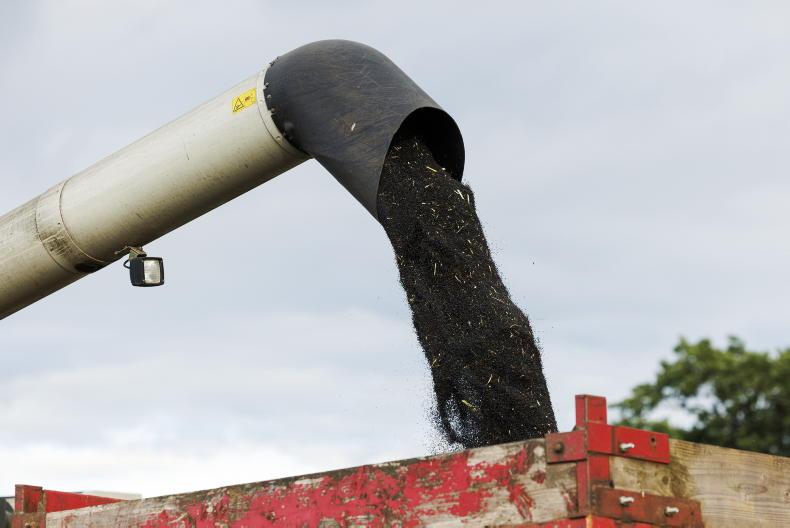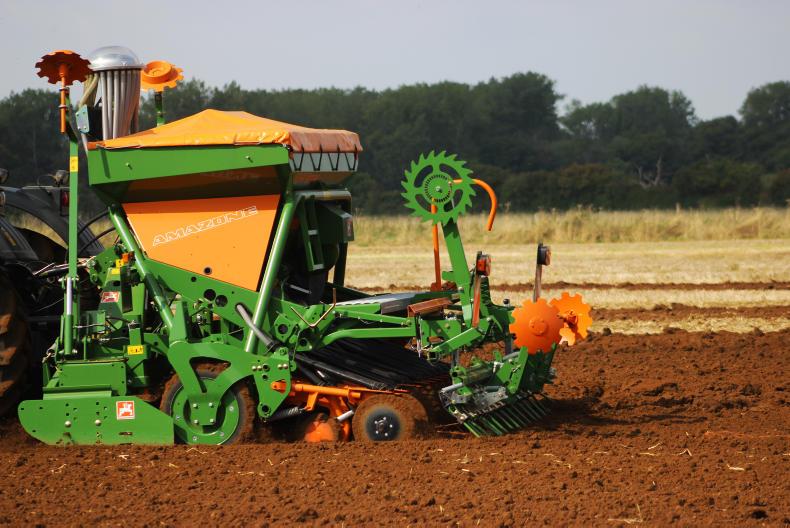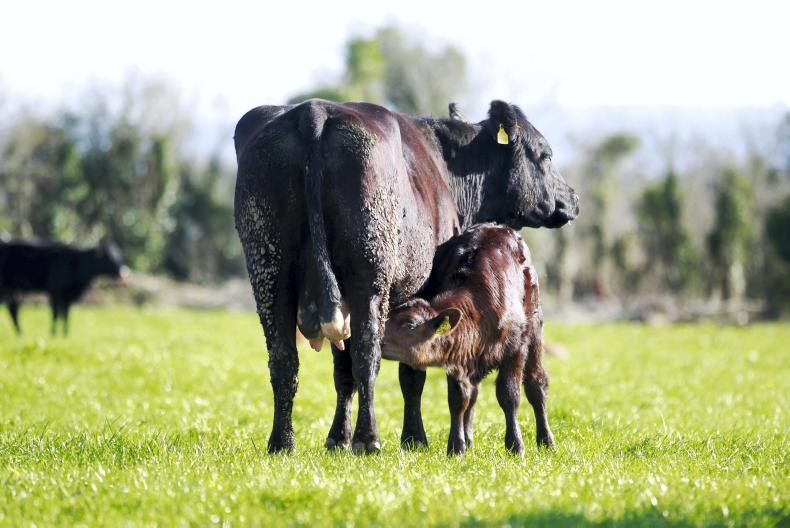Ireland’s competitive advantage in livestock production is based on the efficient production and utilisation of pasture. Grass production will be maximised on farms where soil fertility status is high, adequate nitrogen fertiliser is being applied and pastures are predominantly perennial ryegrass/white clover based. It is now more important than ever to exploit the potential of grazed grass during the entire grazing season. It is obvious from National Farm Survey Data and PastureBase Ireland data that most farms have the capacity to grow more grass. This data broadly demonstrates that for every additional tonne of grass utilised/ha, net profit increases by about €180/ha on dairy farms and €105/ha on drystock farms.
However, high fertiliser prices and enhanced regulation under the Nitrates Directive have led to a decrease in soil fertility levels. Approximately 90% of the soils sampled in Ireland are limiting in one of the three major factors that affect soil fertility (pH, P and K). This results in a significant reduction in grass production particularly at the shoulders of the grass-growing season. Poor soil health also lowers the efficiency of nitrogen fertiliser application. Therefore, farmers must place a greater emphasis on soil fertility management.
Trying to plan fertiliser application strategies without information on soil fertility levels is impossible. Therefore, soil test results for the whole farm are essential. Although it costs money to increase fertility levels on low fertility soils, the returns in terms of grass production can be considerable, which can increase livestock carrying capacity, increase the provision of winter feed (silage) and enable ryegrass to persist in the sward.
Improving soil fertility
The first step is to take soil samples. This should ideally happen in November, December or early January. Many milk processors have incentivised soil sampling and analysis, so every dairy farmer should take advantage of this. About €150 to €200 will get 10 samples taken and analysed on a 100-acre (40ha) farm.
So the first step to grow more grass is to look below the surface. To do this, we need to carry out a soil test. We need to ensure that a good representative sample of the field is taken for the soil test. It is recommended that one sample box is taken for every eight to 10 acres (about 4ha) and that the box is full (a minimum of 20 cores).

The next step is to study the results and identify what each paddock/field needs in terms of P, K and lime. The starting point when building soil fertility is to apply lime according to the soil test recommendations. Soil pH affects the availability and crop uptake of both macro and trace elements. The ideal pH for grass growth is 6.3. This maximises the availability of nitrogen (N), phosphorus (P) and potassium (K). Applying lime to increase the soil pH, will increase nutrient uptake and DM yield and improve the long-term persistency of perennial ryegrass and clover in the sward.
Recent research illustrates that 5t/ha of lime applied to a soil with low pH (5.3) increased grass production by approximately 1.5t DM/ha in the following two-year period. Previous research on a soil with very low soil pH (5.3) and old permanent pasture indicated that the application of 7.5t of lime/ha increased the stock-carrying capacity by 20% by the end of the first year and by 100% in the fourth year. The impact on grass production was attributed to the effect of lime on soil organic matter breakdown. Liming was estimated to be equivalent in benefit to using approximately 60 units/ac (72kg/ha) of N fertiliser per year. It is also important to remember that liming acidic soils to correct soil pH will increase the availability of soil P and K.
Grass requires a continuous and balanced nutrient supply from the soil to achieve its production potential. Some well-managed and fertile farms are capable of growing in excess of 16t grass DM/ha annually. This level of grass production requires large quantities of nutrients, such as the major nutrients nitrogen (N), P, K and sulphur (S).
Current trends in soil P and K status indicate a movement from higher and more productive Index 3 and 4 down to low fertility Index 1 and 2. The target for both P and K needs to be Index 3 (targeting high values within Index 3).
Upgrading soils with poor fertility status is essential to prevent an overall reduction in soil fertility below that required to grow productive grass swards in time. Increasing soil fertility of Index 1 and 2 soils up to Index 3 is vital to maintain high grass DM production across the farm. Recent research has shown that soils with P Index 3 will grow approximately 1.5 DM/ha per year more grass than soils with P Index 1.
A longer-term study on the effect of P fertiliser on grass production on two sites with low soil P showed that low inputs of P (15kg/ha per year or 12 units/acre/year) resulted in grass production benefits of close to 1t DM/ha per year. Most of the grass production response in these experiments took place in spring and early summer. So, most P application should be targeted in the first half of the year.
Fixing a deficiency in soil K also increases grass production. There are no regulatory restrictions on the application of potassium (K) and it is about half the cost of P fertiliser, yet Irish soils are also very deficient in K. Unlike P, most K application should be targeted towards the latter half of the year.
Slurry is a valuable source of nutrients on every farm. The fertiliser value of slurry translates to approximately five units of P and 30 units of K per 1,000 gallons (similar to one bag of 0:7:30). Slurry should be targeted at the paddocks with lowest soil index. To maximise the nutrient response from slurry, application should take place during spring. Slurry alone will not be adequate to maintain P and K in silage paddocks and these two nutrients must also be applied in the form of chemical fertiliser.
The slurry that is on your farm is the cheapest form of fertiliser you can have. So make use of it.
Finally, sulphur (S) is also a key nutrient that needs to be applied in fertiliser, especially on light, free draining soils. Deficiency of S in swards will reduce grass production by up to 14% and also reduces the response to N fertiliser. Sulphur application should be carried out in April/May and about 15 to 20 units/acre of S is required to be applied before July 1st.
Moving from Index 1 to 3 for soil P and K and having pH (lime status) right (pH 6.2) will increase grass production by an extra 3t grass DM/ha/ year. This is worth over €300/ha/year additional profit on a farm.
Read more
Special focus: fertilisers
Ireland’s competitive advantage in livestock production is based on the efficient production and utilisation of pasture. Grass production will be maximised on farms where soil fertility status is high, adequate nitrogen fertiliser is being applied and pastures are predominantly perennial ryegrass/white clover based. It is now more important than ever to exploit the potential of grazed grass during the entire grazing season. It is obvious from National Farm Survey Data and PastureBase Ireland data that most farms have the capacity to grow more grass. This data broadly demonstrates that for every additional tonne of grass utilised/ha, net profit increases by about €180/ha on dairy farms and €105/ha on drystock farms.
However, high fertiliser prices and enhanced regulation under the Nitrates Directive have led to a decrease in soil fertility levels. Approximately 90% of the soils sampled in Ireland are limiting in one of the three major factors that affect soil fertility (pH, P and K). This results in a significant reduction in grass production particularly at the shoulders of the grass-growing season. Poor soil health also lowers the efficiency of nitrogen fertiliser application. Therefore, farmers must place a greater emphasis on soil fertility management.
Trying to plan fertiliser application strategies without information on soil fertility levels is impossible. Therefore, soil test results for the whole farm are essential. Although it costs money to increase fertility levels on low fertility soils, the returns in terms of grass production can be considerable, which can increase livestock carrying capacity, increase the provision of winter feed (silage) and enable ryegrass to persist in the sward.
Improving soil fertility
The first step is to take soil samples. This should ideally happen in November, December or early January. Many milk processors have incentivised soil sampling and analysis, so every dairy farmer should take advantage of this. About €150 to €200 will get 10 samples taken and analysed on a 100-acre (40ha) farm.
So the first step to grow more grass is to look below the surface. To do this, we need to carry out a soil test. We need to ensure that a good representative sample of the field is taken for the soil test. It is recommended that one sample box is taken for every eight to 10 acres (about 4ha) and that the box is full (a minimum of 20 cores).

The next step is to study the results and identify what each paddock/field needs in terms of P, K and lime. The starting point when building soil fertility is to apply lime according to the soil test recommendations. Soil pH affects the availability and crop uptake of both macro and trace elements. The ideal pH for grass growth is 6.3. This maximises the availability of nitrogen (N), phosphorus (P) and potassium (K). Applying lime to increase the soil pH, will increase nutrient uptake and DM yield and improve the long-term persistency of perennial ryegrass and clover in the sward.
Recent research illustrates that 5t/ha of lime applied to a soil with low pH (5.3) increased grass production by approximately 1.5t DM/ha in the following two-year period. Previous research on a soil with very low soil pH (5.3) and old permanent pasture indicated that the application of 7.5t of lime/ha increased the stock-carrying capacity by 20% by the end of the first year and by 100% in the fourth year. The impact on grass production was attributed to the effect of lime on soil organic matter breakdown. Liming was estimated to be equivalent in benefit to using approximately 60 units/ac (72kg/ha) of N fertiliser per year. It is also important to remember that liming acidic soils to correct soil pH will increase the availability of soil P and K.
Grass requires a continuous and balanced nutrient supply from the soil to achieve its production potential. Some well-managed and fertile farms are capable of growing in excess of 16t grass DM/ha annually. This level of grass production requires large quantities of nutrients, such as the major nutrients nitrogen (N), P, K and sulphur (S).
Current trends in soil P and K status indicate a movement from higher and more productive Index 3 and 4 down to low fertility Index 1 and 2. The target for both P and K needs to be Index 3 (targeting high values within Index 3).
Upgrading soils with poor fertility status is essential to prevent an overall reduction in soil fertility below that required to grow productive grass swards in time. Increasing soil fertility of Index 1 and 2 soils up to Index 3 is vital to maintain high grass DM production across the farm. Recent research has shown that soils with P Index 3 will grow approximately 1.5 DM/ha per year more grass than soils with P Index 1.
A longer-term study on the effect of P fertiliser on grass production on two sites with low soil P showed that low inputs of P (15kg/ha per year or 12 units/acre/year) resulted in grass production benefits of close to 1t DM/ha per year. Most of the grass production response in these experiments took place in spring and early summer. So, most P application should be targeted in the first half of the year.
Fixing a deficiency in soil K also increases grass production. There are no regulatory restrictions on the application of potassium (K) and it is about half the cost of P fertiliser, yet Irish soils are also very deficient in K. Unlike P, most K application should be targeted towards the latter half of the year.
Slurry is a valuable source of nutrients on every farm. The fertiliser value of slurry translates to approximately five units of P and 30 units of K per 1,000 gallons (similar to one bag of 0:7:30). Slurry should be targeted at the paddocks with lowest soil index. To maximise the nutrient response from slurry, application should take place during spring. Slurry alone will not be adequate to maintain P and K in silage paddocks and these two nutrients must also be applied in the form of chemical fertiliser.
The slurry that is on your farm is the cheapest form of fertiliser you can have. So make use of it.
Finally, sulphur (S) is also a key nutrient that needs to be applied in fertiliser, especially on light, free draining soils. Deficiency of S in swards will reduce grass production by up to 14% and also reduces the response to N fertiliser. Sulphur application should be carried out in April/May and about 15 to 20 units/acre of S is required to be applied before July 1st.
Moving from Index 1 to 3 for soil P and K and having pH (lime status) right (pH 6.2) will increase grass production by an extra 3t grass DM/ha/ year. This is worth over €300/ha/year additional profit on a farm.
Read more
Special focus: fertilisers












SHARING OPTIONS